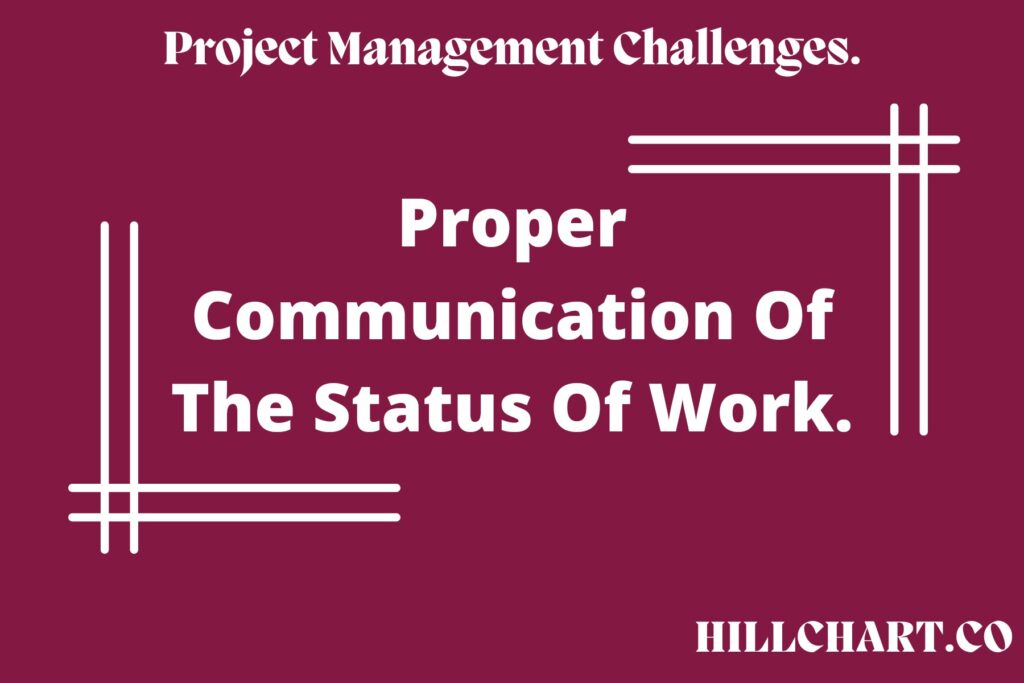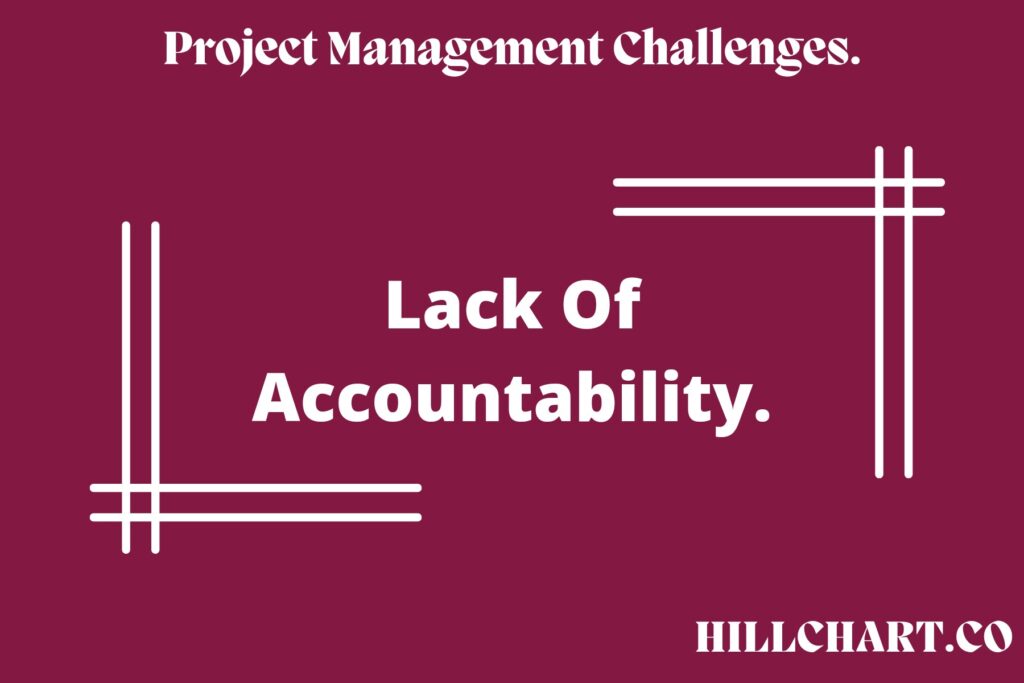Managing a project from start to finish is like a journey; on this journey, there are project management challenges that you may face, and you have to overcome them to complete the project.
Most times, your experience as a project manager could help you overcome some of the challenges you face. However, depending on the project and team you are working with, you would have to take a different approach to resolve the issue.
According to the Pulse of the Profession 2020 report, 11.4% of business investments are wasted due to poor performance of projects, which is caused by the challenges faced in managing the projects.
This report shows how important it is to be aware of these project management challenges so you know how to solve them when you face them.
In this article, I will show you five significant challenges faced when managing a project with a team and how the Hill Chart, a new project management chart, can solve these challenges for you.
Before we get to these project management challenges the hill chart was developed to solve, I would like to explain to you how the hill chart work; What is a Hill Chart?
What Is A Hill Chart?
A Hill Chart is a project management chart that graphically represents the progress on different tasks in a project using a hill-like shape.
To every hill, there are two sides, the uphill and the downhill. The Hill Chart uses this concept to divide work on a task into two phases, the Uphill Phase and the Downhill Phase.
In the Uphill phase, a task is said to be in its problem-solving stage, where the solution to the task is unknown to the team, while in the Downhill phase, the task is said to be in its execution stage and soon will be completed.
A point represents each independent task in a project, and as the team progresses with each task, they move the points uphill or downhill to communicate their progress to other team members.
Explaining the Hill Chart in full detail is out of the scope of this article; to learn more about using the hill chart, go through our Hill Chart guide. For now, let’s get to the project management challenges that can be solved using the hill chart.
5 Project Management Challenges.
There are a lot of challenges faced when managing a project, and these include:
- Budgeting,
- Project scope creep,
- Time,
- Communication and so on.
The five challenges explained in this article are those faced when working with a team, and I will show you how the Hill chart can solve them.
Note: Most of the challenges here are gotten from the book ‘Shape Up’ written by the inventor of the Hill Chart, Ryan Singer. I recommend you read the book as it contains helpful information on managing a project effectively. Now let’s get to the challenges.
- Proper Communication Of The Status Of Work.
- Working With Unrealistic Deadlines.
- Lack Of Accountability.
- Working On A Project In The Right Sequence.
- Picking The Right Project Management Software.
1. Proper Communication Of The Status Of Work:

The Problem:
Effective communication is essential for the success of a project, especially between team members, but most times, effective communication is missing.
When I mean effective communication here, I am referring to the communication of the status of work in a project. Managing a project and having no idea where the team is in the project is a challenge faced by many project managers.
To deal with this, meetings are conducted regularly, and the managers ask the team questions about the project they are working on to know the state of things. Not only is this approach time-consuming, but it can also feel awkward, and most times, there still isn’t clarity on what the team has done, where they are, and what is left, and checking a to-do list can’t help with this.
How The Hill Chart Solves This:
The structure of the hill chart allows you to zoom out of the project you are working on and have a bird’s eye view of everything the team is doing. You can see directly on the chart where things stand with the project.
Each team member moves the points on the hill as they make progress on the task assigned to them. With HillChart.co, they can also add short not on what they have done that prompt the movement of the point that represents their task.
Everyone in the team, including the project manager, can see the status of work on the project and know if the task is in the problem-solving stage (uphill) or execution stage (downhill).
By adding a new version on HillChart.co each time changes are made on the hill chart, you can also view the team’s progress over time and identify who is stuck and who is moving slowly.
All this information can be obtained from a hill chart, and without organizing time-consuming meetings, you can view the status of work on the project and know if everything is in line with the estimated deadlines. This leads us to the next challenge.
2. Working with Unrealistic Deadlines:

The Problem:
When working on a project with the team, after breaking it down into independent and manageable tasks and writing it out as a to-do list, a deadline is always fixed for each of them, which serves as the estimated timeline for the project.
Working with other project management tools, you can view the status of each of the tasks, which could be “done,” “in progress,” or “on hold,” and most times, you just have to trust that the status will change to “done” on or before the deadline.
In most cases, everything will work as planned, and everyone meets the deadline, but sometimes, it doesn’t, and the project is not completed as planned.
How The Hill Chart Solves This:
All these can be prevented with the help of a hill chart. With access to the status of work on the project, you can identify tasks that are stuck or moving slower than it was planned and reach out to the person assigned that task.
You can then ask if they are having issues with something or need some assistance but find it difficult to open up to you. From there, you can assist in getting things moving on time so it does not affect the project’s deadline.
One crucial statement Ryan Singer made in his book shape up is this: “The problem with estimates is they have a very different meaning depending on the nature of the work being estimated.”
This is something you need to consider when setting estimated deadlines for the tasks in your project: the nature of the work/task and the hill chart give a good way of identifying the nature of these tasks.
Note: The term “the nature of the work” here refers to how soon the team can begin execution to complete a task.
When you have a task in a project, if the solution to the task is clear from the beginning, then the point on the hill chart is placed on top of the hill.
This means that the team has either done this task before or the task is one with a straightforward solution, and all that is left is execution. You can make an estimated deadline for a task like this, and it will all work as planned, at least most times.
When you have a task in a project, and the point for the task is placed at the bottom left part of the hill, this shows that the solution to the task is unknown, meaning the team has not worked on a task like that before.
Any estimated deadline for a task like this might not be met because no one knows precisely how long it will take them to figure out the solution to the task.
Once the solution to the task is figured out, and the point for the task is moved uphill, you can make a reasonable estimate and adjust your first.
This concept from a hill chart can guide you through the planning stage of your project. You are sure of tasks that will meet the estimated deadlines and those that are uncertain, so you can follow closely with them, find out if the team is stuck with the task on time, and look for a good fix before it is too late.
3. Lack Of Accountability:

Problem:
Accountability might not be a big issue for a simple project requiring just one person to handle it from start to finish, but when it comes to a complex project requiring teamwork, keeping every team member accountable to each other can be a big issue.
This even worsens when the completion of a task by one person in the team depends on the completion of another person’s task. In cases like this, you need everyone in the team to be accountable to each other (especially when their tasks are dependent on each other), and most of the time, this is very challenging.
It also worsens when “Nobody says I don’t know how to solve my task.” This could occur for different reasons; probably, they thought they knew what to do before, but when they began, it became a different case.
You need issues like this to come out to everyone in the team on time, so everyone can come together and find a way around it, but when accountability is an issue, it doesn’t.
How The Hill Chart Solves This:
I did explain easier how the hill chart can help improve the communication of the status of work among the team. You would agree with me that when there is proper communication among the team members working on a project, there won’t be accountability issues throughout the project lifecycle because every on in the team can view the state of things right on the hill chart.
With the hill chart, progress is visible to all, stuck tasks are visible to all, and tasks moving slowly are visible to all. Anyone who needs information on the project just has to check the hill chart and doesn’t need to organize meetings distracting the team’s workflow.
The issue of accountability can be solved by using the hill chart as your project management chart and placing points on the hill to represent your tasks.
Another important thing to note is that, when placing points to represent your task, ensure that each point is independent of the other so nobody has to wait for somebody in the team before they can complete their task and they can move their point independently.
This cuts down the issue of accountability, and every team member can work independently to achieve a common goal.
4. Working On A Project In The Proper Sequence:

The Problem:
When working on a project and you have listed the task for the project, there is a huge to work on the easy and simple tasks or tasks with a clear solution from the beginning and neglect the other uncertain task.
The problem with working this way is that the neglected tasks are uncertain, and as I said earlier, the team doesn’t know how long it will take them to complete those tasks. Shifting tasks like this to the end of the project’s lifecycle can affect the project’s deadline if things don’t go as planned.
How The Hill Chart Solves This:
On the hill chart, you have your tasks with a clear solution at the top of the hill and those that are uncertain at the bottom left of the hill. The proper sequence is to get all tasks uphill first, and then everyone can drive their task down the hill.
Working this way, the entire project is clear to everyone in the team, and everyone can focus on execution together. This will also help you set a deadline for the entire project since the tasks are all clear and what is left is executions.
5. Picking the Right Project Management Software:

When working on a project, it is beneficial to work with project management software that can aid teamwork in planning, organizing, and executing the project through its lifecycle.
Most times, picking the right management software for the job can be challenging because every project, team, or organization work best with different project management software.
If the right project management software is not used in a project, it can affect the team and sometimes lead to another project management challenge, so it is essential to find the right software that works best for your team and the type of project you are managing.
How The Hill Chart Solves This:
The hill chart can’t directly solve this issue because it is a project management chart and not a project management software, but it can assist you in picking a good project management software.
When picking a project management software for your project, it is essential to remember the team you are working with, the organization, the industry, and the type of project you are working on.
You also need to consider if the software has a hill chart, and after reading this article to this point, you understand why I say this.
Using project management software with a hill chart can help solve all the challenges listed above, and I know you read to this point because you want to solve these issues.
To assist you in your search for a project management software with a hill chart, here is a list of them:
Conclusion:
In the journey of managing projects, there are challenges you could face, so I decided to use this article to highlight 5 of the possible challenges you might have to deal with or have been dealing with and how these challenges can be resolved with the help of a hill chart.
Note that the five challenges I highlighted in this article are just a few of the challenges you might face while working on a project. If you have any challenge that wasn’t listed here and you need help with it, you can reach out to us, and we could work together to fix things.
On your next project, you are five steps better at managing it now since you know how to solve five different challenges that you might face while working on the project. If you still aren’t clear on how to use the hill chart, then go through our guide.
Get started with HillChart.co and solve your project management challenges today.